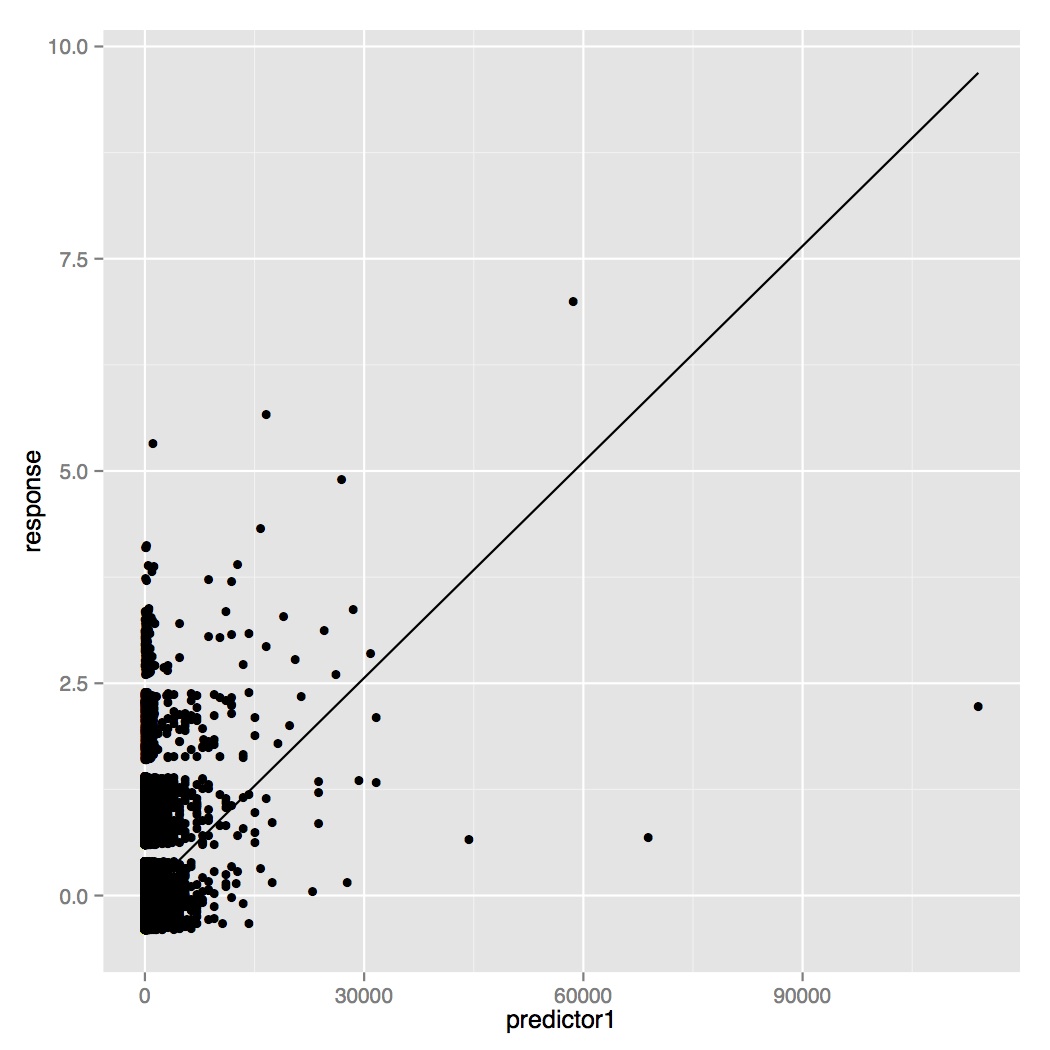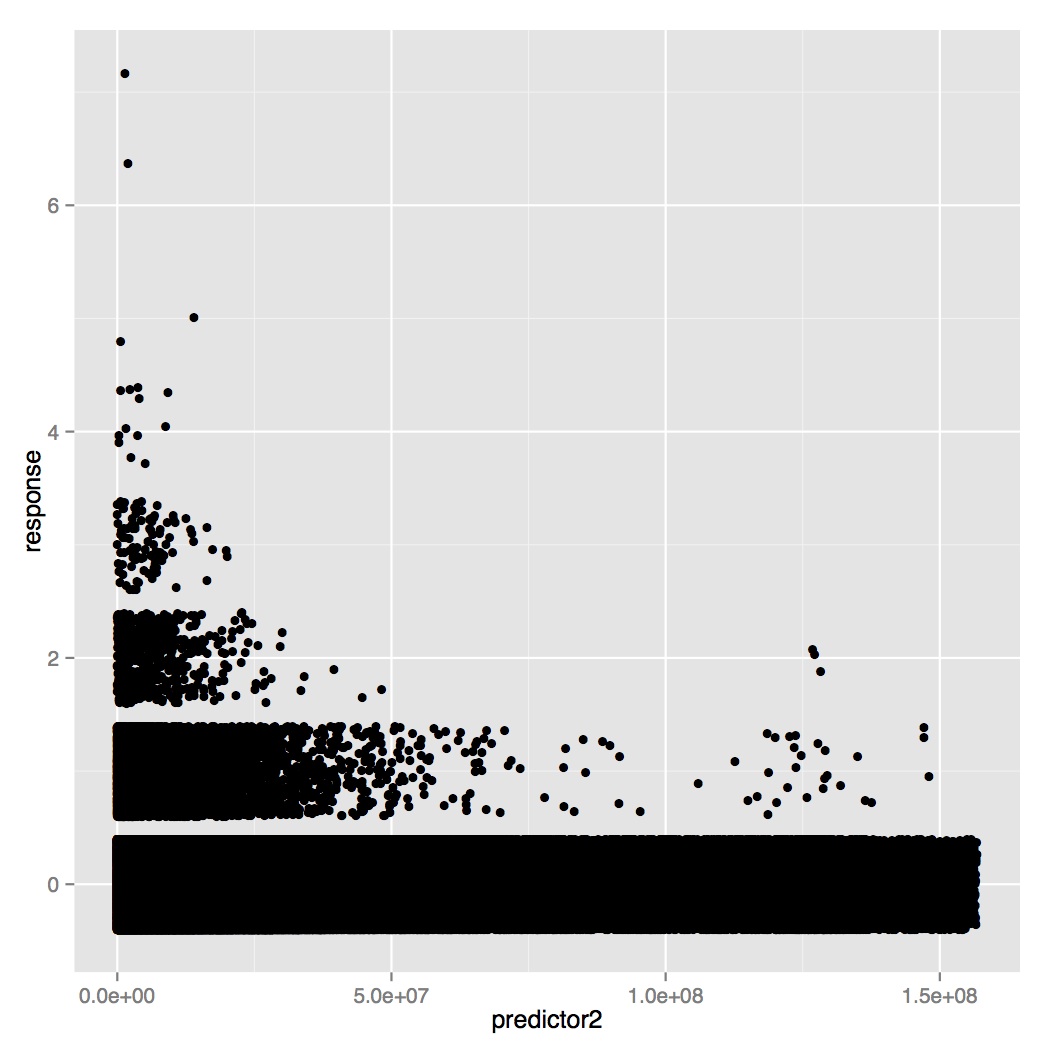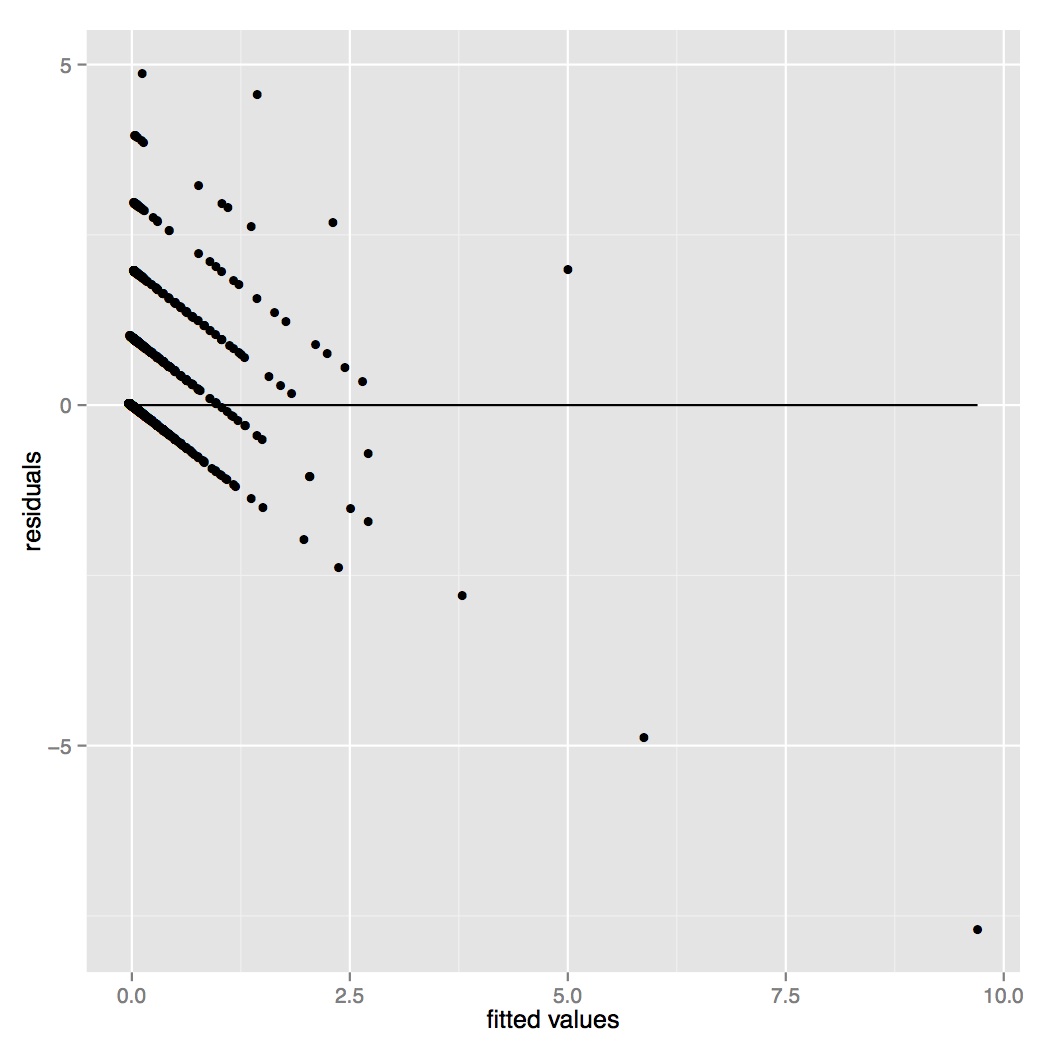I want to train a linear regression model to predict a non-linear variable. This how the two independent variables correlated against the response (points are jittered):


And the residuals against the fitted values:

Most of the values for the response are zero. The effect is a very strong heteroscedasticity
studentized Breusch-Pagan test
data: model
BP = 55483.84, df = 2, p-value < 2.2e-16
event though the the predictors are strongly correlated with the response
Call:
lm(formula = response ~ predictor1 + predictor2, data = train_predictors)
Residuals:
Min 1Q Median 3Q Max
-7.6996 -0.0268 -0.0238 -0.0182 4.8785
Coefficients:
Estimate Std. Error t value Pr(>|t|)
(Intercept) 2.748e-02 2.825e-04 97.28 <2e-16 ***
predictor1 8.491e-05 6.574e-07 129.16 <2e-16 ***
predictor2 -3.934e-10 8.298e-12 -47.41 <2e-16 ***
---
Signif. codes: 0 ‘***’ 0.001 ‘**’ 0.01 ‘*’ 0.05 ‘.’ 0.1 ‘ ’ 1
Residual standard error: 0.1561 on 498498 degrees of freedom
Multiple R-squared: 0.0365, Adjusted R-squared: 0.0365
F-statistic: 9442 on 2 and 498498 DF, p-value: < 2.2e-16
Should I consider more adopting non-linear models or could I first try correcting the non-linearity of the response?
